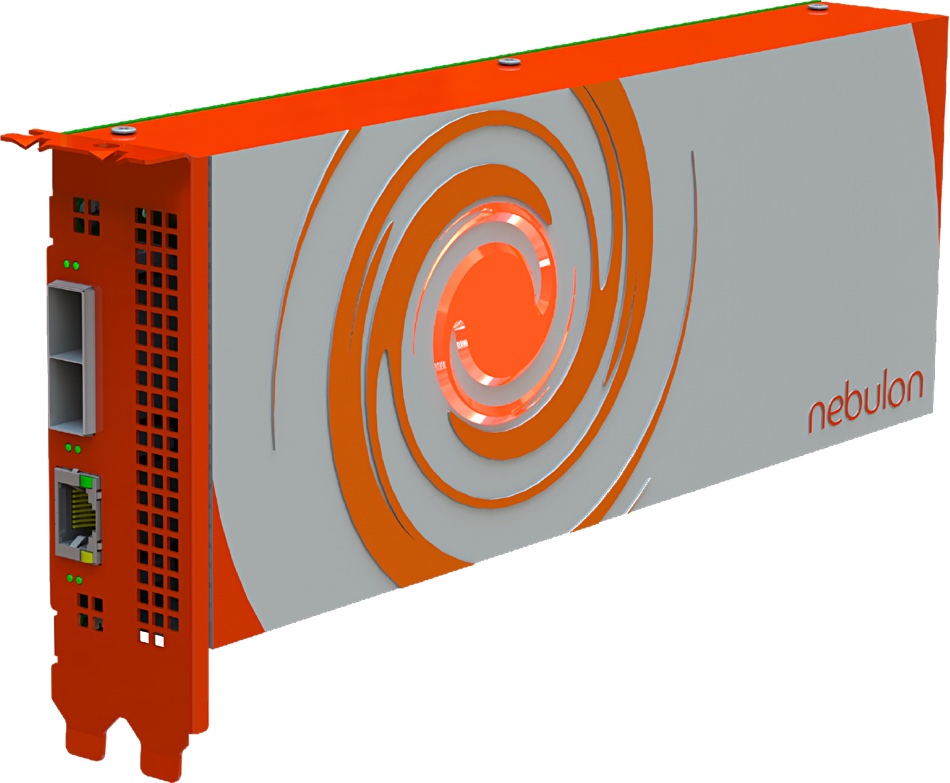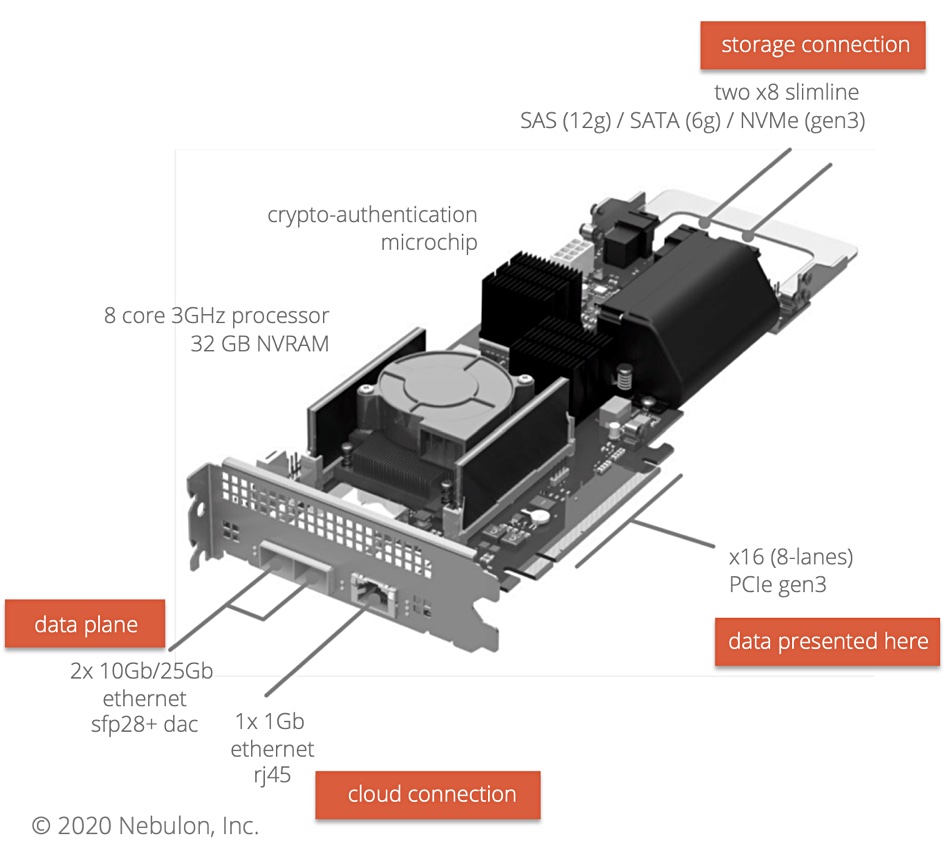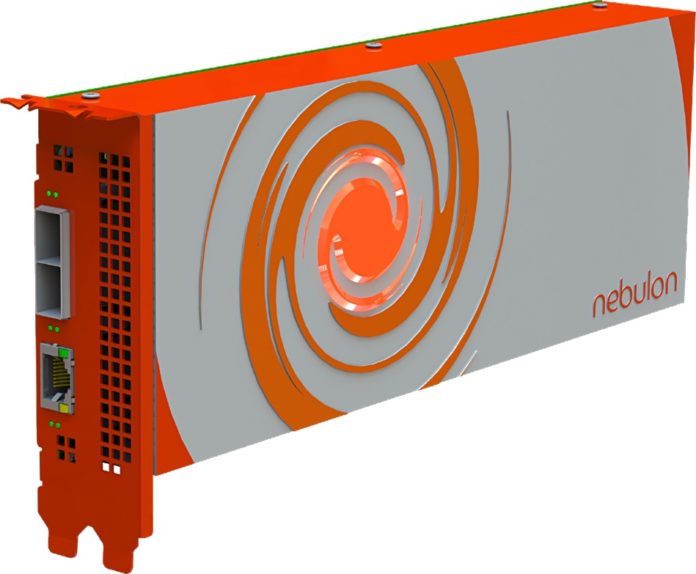Analysis. Nebulon, a storage startup that came out of stealth in June, aims to compete with SAN arrays and HCI. It has built a product that fits into neither category. Let’s take a look.
A Nebulon array or nPod is a set of servers with locally-attached SSDs that are accessed via an interface card called a storage processing unit (SPU). The SPUs are networked and aggregated into a virtual SAN.
Think of the SPU as replacing the server RAID card or SAN Host Bus Adapter (HBA). The SPU uses dual Arm processors and various offload engines to perform SAN controller functions but at a lower hardware cost.

Nebulon versus SAN
Nebulon has worked out some cost examples comparing nPods to a Pure FlashArray in various application scenarios; containerised NoSQL development, virtualization development, virtualzsation production, and virtualization stretch cluster. the company used public website pricing information for Pure Storage, Emulex HBAs, a Cisco MDS SAN switch, and Ethernet switches. Of course, many customers will have secured discounts off list price.
In each case the application servers were the same: Supermicro 2029U-TR4, Quad 1-GbE, 1000W, 2 x Intel 6242 16-Core 2.8GHz including 12 x 32GB PC4-23400 2933MHz DDR4 ECC RDIMM. The configurations supported 32 VMs or containers per server.

In the NoSQL example there were 12 application servers. A Pure Storage FlashArray X50R3-FC-63TB-45/18-EMEZZ with 18 x 3.84TB SSDs was compared to each application server having a Nebulon SPU with six 960GB Intel SATA SSDs.
The protection overhead was 33 per cent for both Pure and Nebulon. Pure had a 4:1 data reduction ratio while Nebulon’s was 3.6:1. The effective capacity per server was 12.2TB – 0.38TB per container.
The total system cost for the Pure configuration was $324,736, compared to the Nebulon system cost of $230,403, giving Nebulon a 41 per cent cost advantage. The storage cost per server was $11,317 for Nebulon and $19,178 for Pure Storage.
In the virtualization development scenario, with eight servers, Nebulon had a 49 per cent cost advantage over Pure, and its advantage in virtualization production and stretch clusters, both 216 servers, was 33 per cent and 63 per cent respectively.
Nebulon vs HCI
HCI is a challenge to Nebulon and the company has to convince customers to put their new applications onto its storage instead of existing HCI setups. Nebulon says its advantage comes from offloading storage-related processing from the host server CPUs. This is hard to quantify in cost terms because there are so many different Xeon configurations, core counts, and DRAM amounts.
So Nebulon approaches it indirectly, with the notion of offloading storage-related processing from the host server CPUs and thereby returning CPU cores to application use. One SPU on this view is equivalent to four x86 cores.
The HCI CPUs storage-related processing is an overhead. Nebulon estimates that VSAN adds a 10 per cent overhead to the HCI processors, encryption can add a further 5 to 15 per cent as can dedupe and compression. Altogether there is 20 to 40 per cent storage-related overhead, with Nebulon CEO Siamak Nazari telling us: ”We model 25 per cent conservatively.”
In other words, one in every four HCI CPUs is used up doing storage-related processing. In an 8-node HCI configuration, using identical server CPUs, two CPUs are used up doing storage, encryption, and data reduction. Run this processing on Nebulon’s SPUs and you get those two CPUs back, or you simply don’t need them. A 6-server Nebulon system can do the work of an 8-server HCI system.
As Nebulon SPUs enabls fewer CPU cores, customers can save money on per-core software licensing schemes. Craig Nunes, Nebulon’s COO, said: “Any core-based license scheme is tough for HCI as you have cores that run the HCI Infrastructure.”
Nebulon prefers to sell against HCI on management costs, licensing costs, host server OS flexibility, better protection against server faults, and support of both local and shared storage.
You can buy Nebulon as easily as HCI, Nunes says, because it’s sold through server vendors such as HPE and Supermicro.








